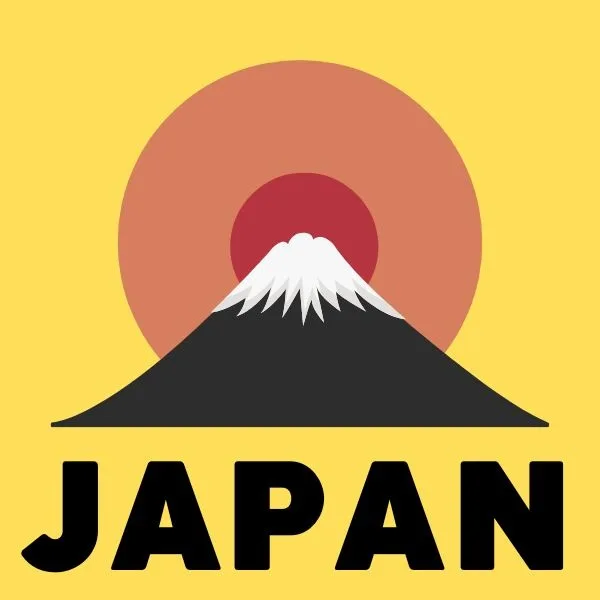Japan has recently introduced a new Japan digital nomad visa, effective from April 1, 2024, opening its doors to a new wave of foreign visitors. This visa is particularly attractive to digital nomads who can enter Japan visa-free and meet the annual income requirement of 10 million yen (approximately USD annual 75K). If you’re a digital nomad looking to experience a long-term stay in Japan, here’s a comprehensive guide to help you navigate your stay.
Plan your digital nomad life in Japan!
Be sure to apply for your visa and book accommodations ahead of time to ensure a smooth start!
✈️ Find the best flight deals to Japan
🏨 Find the best accommodations in Tokyo
🎭 Top experiences we recommend in Tokyo:
🚃 The best way to get around Tokyo is by train. Get your Tokyo Metro pass.
🚗 Rent a car here for exploring areas inside and outside Tokyo.
Understanding the Digital Nomad Visa
The digital nomad visa allows eligible foreign nationals to stay in Japan for up to 6 months while working remotely. To qualify, you must hold a passport from one of the approximately 50 countries or regions, including the United States, Germany, France, South Korea, Hong Kong, and Taiwan. Additionally, you must have an annual income of at least 10 million yen.
Eligibility Requirements

To be eligible for the Japan visa for remote workers, applicants must:
- Earn an annual income of at least 10 million yen (around USD 75,000)
- Work remotely using IT, either for a foreign company or as a freelancer
- Hold a passport from a country with a visa exemption and tax treaty with Japan
- Have private medical insurance covering their entire stay in Japan
Application Process and Tips
When applying for the Digital Nomad Visa, it’s essential to keep in mind that the visa is valid for a maximum of six months and cannot be extended or renewed after expiration. Additionally, Digital Nomad Visa holders will not be issued a residence card.
It’s crucial to remember that the Digital Nomad Visa itself is non-extendable. If you wish to stay in Japan for longer than six months, you’ll need to reapply for a new visa and leave the country before your current visa expires. Planning ahead and allowing sufficient time for the reapplication process is essential to avoid any disruptions to your stay in Japan.
Pro tip: With the Immigration Services Agency handling a high volume of work qualification applications, processing times for the Digital Nomad Visa may take several months. If you’re aiming to stay in Japan during a specific period, be sure to apply well in advance to allow ample time for the review process.
For the most up-to-date and official information, please refer to the Immigration Services Agency of Japan.
Recommended Workspaces for Digital Nomads
Japan offers a variety of workspaces suitable for remote work in Japan. Some popular options include Co-Working spaces, Cafés, and public libraries as below:
1. Co-working spaces:
Shared office spaces like WeWork, ACCEA Café, and JR Station Work provide flexible workspaces with high-speed internet, meeting rooms, and networking opportunities. These co-working spaces Tokyo and other major cities offer are ideal for digital nomads seeking a productive environment.
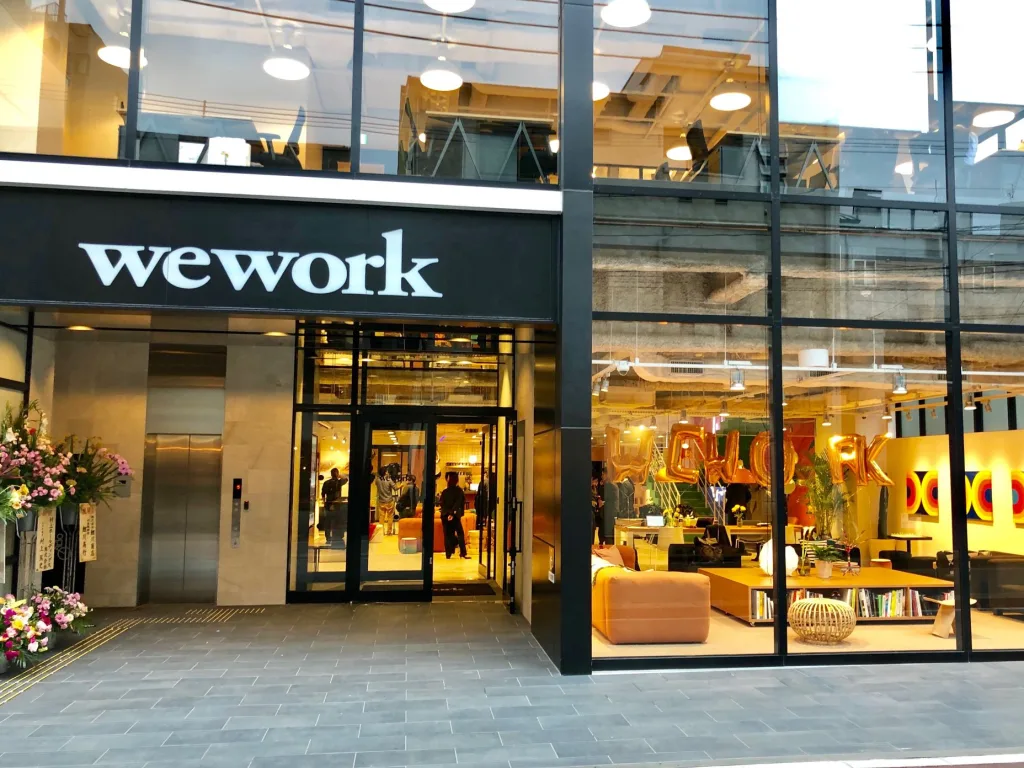
WeWork
As of July 2024, WeWork has 41 locations in Japan, with 31 of them situated in Tokyo. 3 in Osaka and please note that none in Kyoto. WeWork offers modern, well-equipped spaces in prime locations, making it easy for digital nomads to work and connect with others.
ACCEA Cafe
It is our personal favorite and comes highly recommended. ACCEA is a street-corner printing shop, similar to Kinko’s or Staples. In recent years, they have launched a new business model, offering cafes designed for remote workers. All seats are equipped with power outlets and free Wi-Fi, and some locations even provide private booth for meetings. The comfortable and pleasant atmosphere is conducive to productivity.
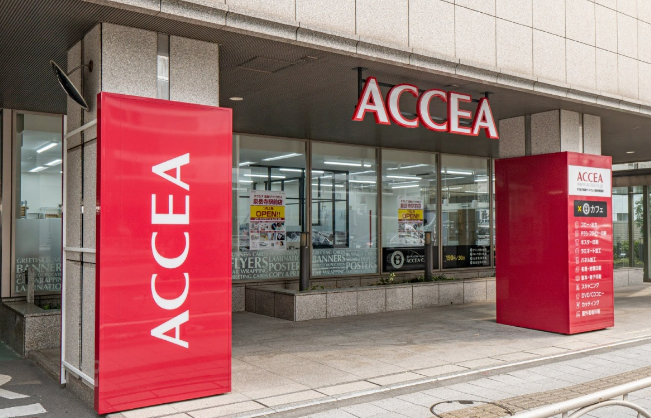
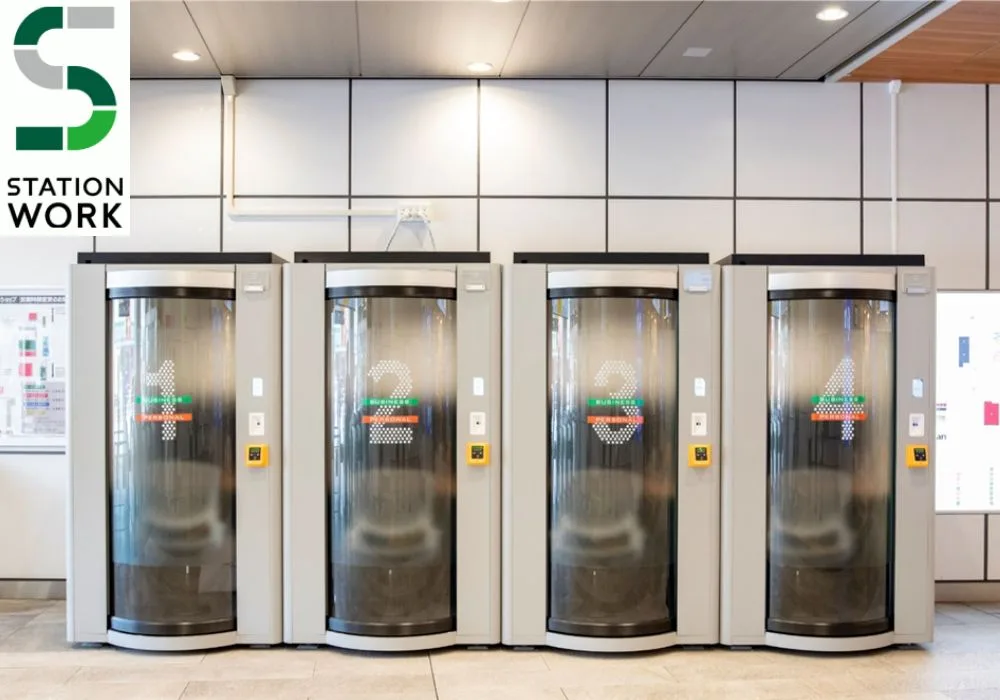
JR Station Work
It is a shared office space operated by JR East, one of Japan’s leading railway companies. It has gained popularity for its convenience, allowing users to access the facilities in 15-minute increments near train stations. As of 2024, it boasts approx 430K members and over 400 locations. One drawback for digital nomads is that the initial registration process is only available in Japanese, so you’ll need to use browser translation tools to complete the sign-up. However, once you overcome this hurdle, it’s a great resource to take full advantage of.
2. Cafés:
Japan has an abundance of cafes, especially in Tokyo, where you can find them at every station. However, not many of them offer power outlets or free Wi-Fi. The following cafe chains are recommended for work purposes due to their availability of power outlets and free Wi-Fi. Starbucks tends to be crowded, so securing a seat may require some effort.😊

Starbucks
Japan has the third-highest number of Starbucks stores worldwide, with over 1,900 locations, following the United States and China. The first Starbucks in Japan opened in 1996 in Ginza, marking the company’s first overseas expansion outside North America. Many stores have seats with power outlets, and free Wi-Fi is available at all locations. When it comes to remote work, Starbucks is the top recommendation, given its numerous stores that can be found almost everywhere.
Tully’s
It is a cafe chain that originated in Seattle and now has 780+ stores in Japan, taking inspiration from Starbucks. The concept, menu, and store design are very similar to Starbucks, so you may not feel any discomfort even when visiting for the first time. Free Wi-Fi is available, and some seats have power outlets.


Café de Crie
It is a Japan-originated cafe chain born from the concept of “creating” cafe culture. There are approx 200 stores nationwide. Power outlets and free Wi-Fi are available. Some stores have a “remoteworkBox,” a fully private booth that can be used for 500 yen (approx. $3.75 USD) per hour, with reservations available in 15-minute increments. The booth is equipped with Wi-Fi, ventilation, and charging facilities.
3. Libraries
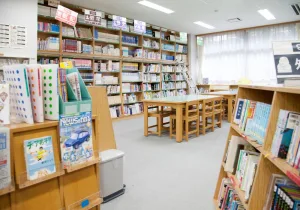
Public libraries in Japan often have quiet study areas where you can work remotely. Some libraries also offer free Wi-Fi. Registration or reservation may be required to use the study areas or PC booths.
Short-term Accommodation Options
Finding suitable digital nomad accommodation Japan for your 6-month stay can be challenging. To help you out, we’ve compiled a list of recommended options, including two serviced apartments, three extended-stay hotels, and four hostels. These popular and cool accommodations are perfect for solo travelers or couples. Keep in mind that these places tend to fill up quickly, so if you find something you like, we recommend booking it right away.
1. Serviced apartments:
Fully-furnished apartments with hotel-like amenities, perfect for extended stays.

Section L, the company behind this gem, was founded in 2020 by a team of hotel experts, most of whom graduated from Cornell University’s Hotel School. They’ve got an impressive background, having worked with big names like Shangri-La, Four Seasons, and hotel real estate funds.
It shows in the quality of their properties – their other locations, like Ginza East, Asakusa East, Hachobori near Tokyo Station, Hamamatsucho (just a monorail ride from Haneda Airport), Kuramae close to Asakusa, and Tsukiji, known for its famous fish market, all get rave reviews from guests. These hotels are a cool and comfortable choice for your digital nomad lifestyle in Tokyo.
2. Extended-stay hotels:
Hotels designed for longer stays, with kitchenettes and other home-like amenities.

BnA_WALL‘s location is another highlight, with easy access to multiple train stations within a 10-15 minute walk, providing direct lines to popular tourist attractions. The friendly and helpful staff ensure a pleasant stay, making check-in a breeze even after long flights. Digital nomads seeking a unique and inspiring experience will find BnA_WALL the perfect base for their stay in Tokyo.
3. Hostels:
Budget-friendly accommodations that offer shared dormitory-style rooms or private rooms. Hostels are a great way to meet fellow travelers and digital nomads while keeping costs low. Many hostels in Japan provide comfortable facilities, free Wi-Fi, and common areas for socializing and working.

Remote workers will appreciate the free Wi-Fi throughout the hostel, ensuring a seamless connection for work and communication. The on-site coffee stand, BERTH COFFEE, serves specialty coffee, bringing out the inherent flavors and aromas of the beans. BERTH COFFEE uses in-house roasted beans and features guest roaster slots, offering a variety of coffee flavors from various roasters. The basement features a bar & dining area, offering original beers and various drinks, as well as a menu focused on dishes that pair well with wine. Both the first floor and basement are open to non-guests, creating a lively and welcoming atmosphere.
CITAN Hostel‘s prime location, just a short walk from the metro station, allows for easy access to the entire city. The quiet neighborhood and the mix of local and international visitors at the cafe and bar create a unique and engaging experience for remote workers looking to immerse themselves in Tokyo’s culture while maintaining a productive work environment.
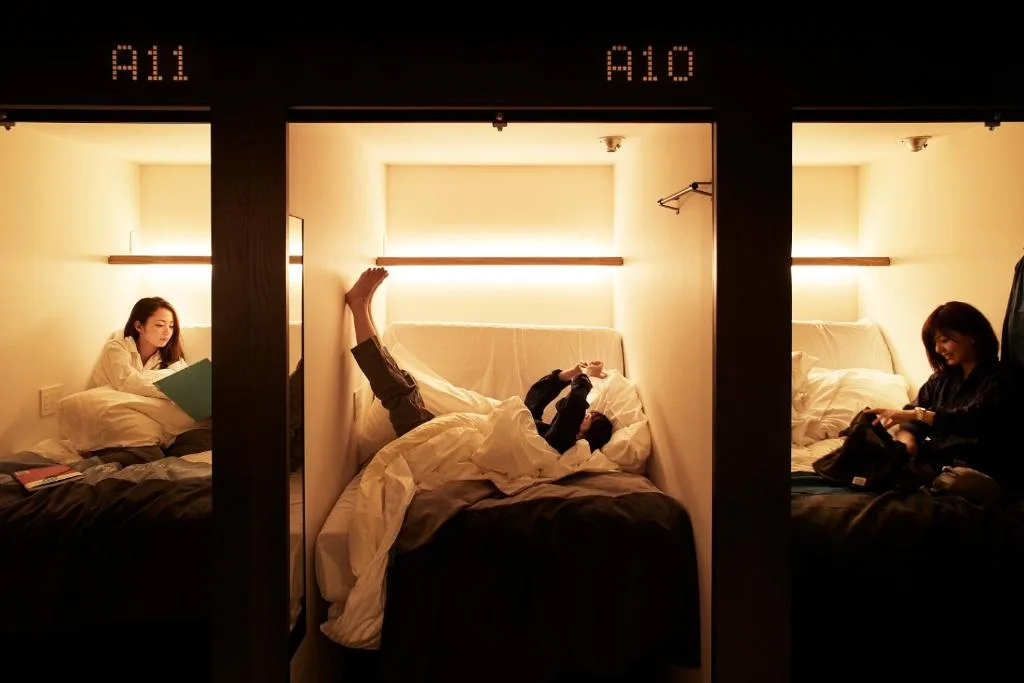
Remote workers will appreciate the two-floor lounge space, which doubles as a co-working area called “.andwork.” The 4th floor lounge offers a relaxed atmosphere with comfortable sofas, high tables for standing work, rental PCs, and a copy machine (available at the front desk). The island kitchen on the same floor is freely available, and complimentary drinks such as coffee and tea are accessible 24/7. The 3rd floor working lounge, “.andwork,” features box seats for four, wide desk seats, sofa seats, and two phone booths for making calls or conducting online meetings. Each table (or the foot area for box seats) is equipped with ample power outlets, and guests can use the secure, high-speed free Wi-Fi for a smooth working environment.
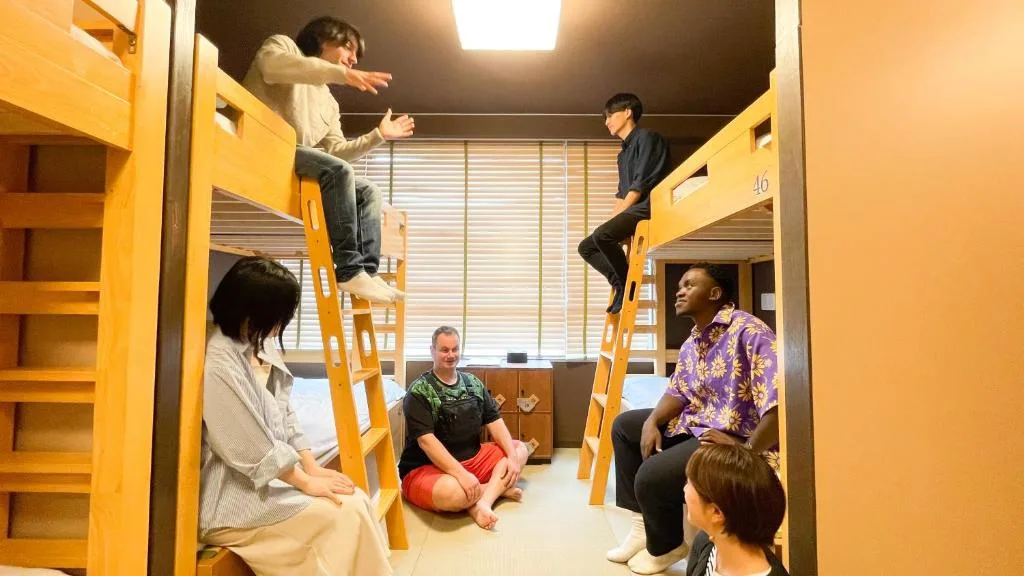
The hostel’s 9-story building is filled with amenities that promote relaxation, including the mist sauna and kiosk on the 1st floor, as well as the foot bath and floor-level desks in the 7th-floor work lounge. The hotel’s original aroma, which permeates the building, instantly sets a calming mood upon entry. The tatami flooring in the rooms allows guests to stretch out and feel at home during their stay.
With its shared kitchen, communal refrigerator, laundry facilities, and separate toilets and showers in each room, the hostel accommodates various styles of long-term stays. Whether guests seek to enjoy new encounters and communication or prefer solitude, the hostel caters to all preferences. The hostel also organizes regular events and walking tours, such as sumo public viewings, chanko nabe (hot pot) tours, and walks along the Sumida River, providing opportunities for guests to create lasting memories with fellow travelers.
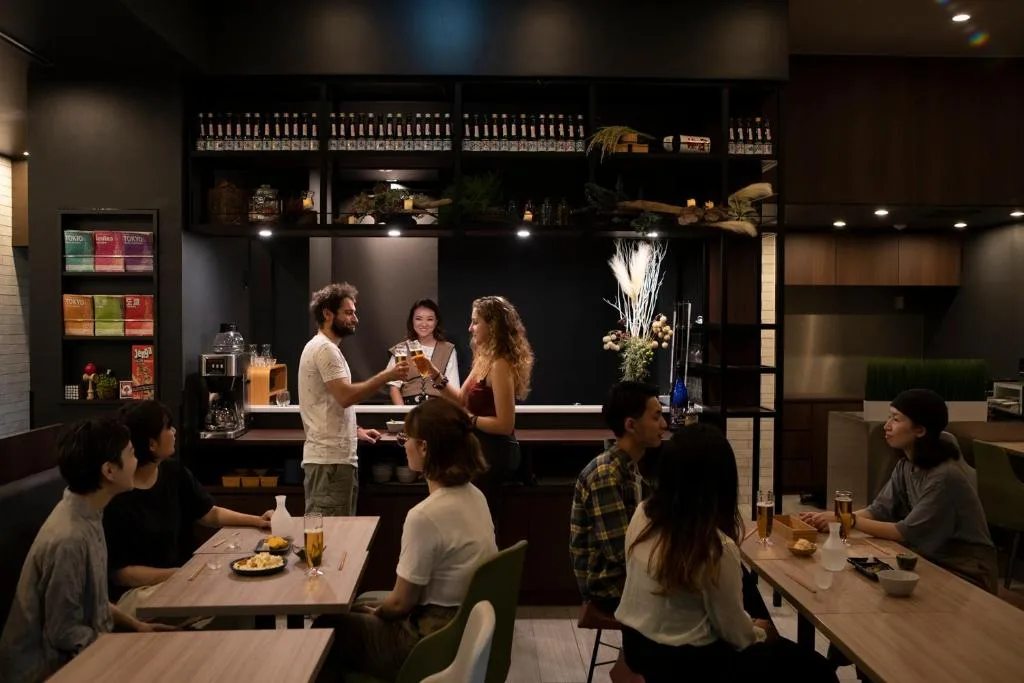
Remote workers can choose from various room types, including private-style rooms within dormitories, catering to different group sizes and purposes. Shared spaces like sinks, showers, toilets, and kitchens help keep prices affordable. The hostel also offers laundry facilities for long-term stays. Breakfast plans include a buffet-style meal, with warm soup and adorable hand-rolled onigiri being particularly popular.
Dormitory rooms feature curtains for privacy, allowing guests to enjoy a comfortable stay. The compact and functional unit-type double rooms with private bathrooms are perfect for budget-conscious travelers. The hostel encourages interaction among guests, fostering a sense of community. Private rooms with bunk beds are also available for those seeking a more intimate setting.
When is the best time to visit Japan for a 6-month stay on a digital nomad visa?
As local Japanese residents, we understand that deciding on the best 6-month period for a long-term stay in Japan on a digital nomad visa can be a challenging point. Japan is known for its distinct four seasons and the rainy season, which are important considerations when planning your stay. In this section, we will introduce our recommendations for the best periods based on the weather conditions.
Ideal Six Months 1: March to August

This period covers the stunning cherry blossom season in spring and the vibrant summer months. The sakura trees bloom from late March to early April, transforming the country into a breathtaking pink landscape. The comfortable temperatures and low rainfall during spring make it perfect for outdoor activities and exploring. Summer, on the other hand, offers numerous festivals and events, allowing you to immerse yourself in Japanese culture.
Ideal Six Months 2: September to February

This period encompasses the magnificent autumn foliage season and the serene winter months. From September to November, Japan’s vast forests display a spectacular array of colors, attracting visitors from around the world. The mild weather during autumn is ideal for working outdoors or in cafes. Winter, from December to February, is perfect for those who enjoy winter sports or the tranquility of the off-season. Japan’s famous onsen (hot springs) are particularly enjoyable during the colder months.
However…Beware of the Rainy Season
We also would advise avoiding the rainy season, which typically lasts from June to mid-July. During this time, the humidity is high, and there is frequent rainfall, which can make it uncomfortable to explore and enjoy outdoor activities.
Ultimately, the best time to spend your 6 months in Japan on a digital nomad visa depends on your personal preferences and priorities. As locals, we believe that either the March to August period or the September to February period would provide you with a wealth of experiences and opportunities to enjoy the best of what Japan has to offer while working as a digital nomad.
Japan Digital Nomad Visa: FAQ
Note: This information is based on the regulations as of 2024. Always check the latest information from official Japanese government sources.
Summary
Japan’s digital nomad visa presents an exciting opportunity for remote workers to experience the country’s safety, well-developed infrastructure, and diverse tourism offerings while working remotely. We hope that your stay in Japan on the digital nomad visa will be a fulfilling and satisfying experience.
As the visa program evolves, we will continue to update and provide the necessary information to help you make the most of your time in this captivating country. We wish you all the best as you apply for your digital nomad visa, and hope you have a wonderful time exploring Japan!😎
